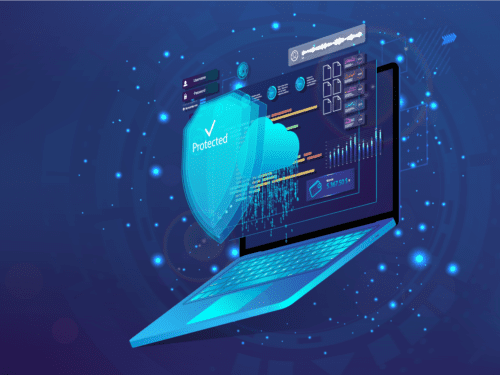Secure systems, whether online or on your personal devices, keep you and your contacts safe. These days, cybercrime is an unfortunate reality of our modern world. When digital properties like email accounts, websites or online portals are vulnerable, it puts everyone with a connection to that virtual property at risk too. That’s why BuildingLink takes software security so seriously.
Hackers target individuals, small businesses and large corporations. In fact, 30,000 websites get hacked every day. Even so, 25% of the business leaders surveyed by Keeper Security, said they didn’t even know where to start with cybersecurity. We weren’t surveyed, but we can safely say BuildingLink’s firmly within the group who not only know where to start but have some of the highest security levels in the industry.

The importance of exceptional software security
When managing vast amounts of personal and business data, security has to be a top priority. It’s not just personal details such as addresses, I.D data and phone numbers that need guarding, payment details, medical information and schedules can be just as valuable to hackers wishing to steal identities, take out fraudulent loans or help plan burglaries.
Building management systems with databases of resident information and corporate business data are a prime target for cybercriminals looking to defraud businesses and individuals. Because accessibility for users is so important, security needs to stay ahead of hackers. The rise in cyberattacks shows how easy it is to get the tools for a digital attack. Targets without proper software security in place put users and their associates at risk.

The best software security for online systems
When it comes to online systems, there are two main types of security. Cloud-based systems can be hosted on public third-party servers and private third-party servers. These have their security managed by the service provider. Lots of businesses use different types of third-party servers as it allows them to focus on their tech without the worry of server security.
A more secure way to manage a cloud-based system is with your own privately owned server. This keeps the system and its associated data in your hands. Security remains the responsibility of the business that owns the server. This generally costs more, but the company has full control over who and when information on their server can be accessed.
BuildingLink’s privately owned servers increase their level of security while improving the accessibility of the system. Multiple servers are kept at secure locations. When work is needed on one server, information can be accessed from one of their other servers. Of course, these servers need to be maintained and updated by BuildingLink to ensure security remains strong.

Ensuring software security through private servers
The best way to ensure server and software security is to periodically test it for vulnerabilities. Web vulnerability scanners are used to probe software security, looking for any digital weaknesses that could be exploited. Before BuildingLink was approved as an Application Service Provider by the Ritz-Carlton Residences Network and Marriott Corporation, an extensive 2-month security inspection was carried out.
This inspection via Nessus and AppWatch resulted in an A rating for the software security of the entire system. Application layers are the most attacked part of online systems today. Manual testing simply can’t keep up. Because of this, vulnerability scanners like AppWatch play a central role in keeping BuildingLink’s software security levels high.
Through regular maintenance, physical security at the sites where BuildingLink’s private servers are located and robust cybersecurity practices, BuildingLink have avoided a breach of their system for more than 20 years. Consistent vulnerability scanning and work to continually improve security ahead of cyber threats and hackers remain a core part of the strategy to lead the proptech sector with essential and secure building management systems.
